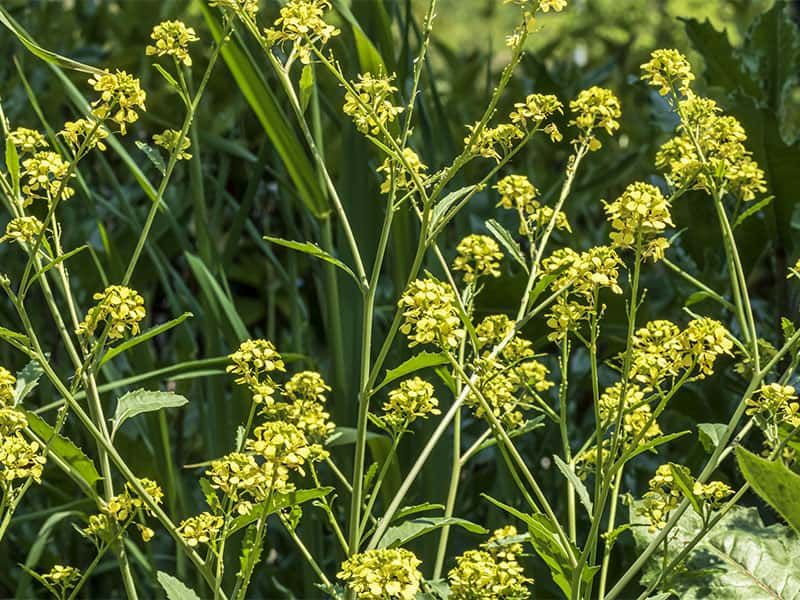
Latin name: Sinapsis alba
Family: Brassicaceae
Agronomic characteristics
White mustard remains the most widespread cover, even if it dominates the other species less and less. At the origin of its success, several reasons: limited cost of seeds, easy sowing even on broacasting, easy destruction, good nitrate trap... It is however sensitive to water stress and high temperatures in the event of early sowing. When it is very developed, it can be difficult to bury by ploughing. Grinding is then often necessary. Its speed of installation and its large size make it quite aggressive with regard to weeds but also to other cover crops species in the event of mixture. As for the varieties: The varietal offer in white mustard has been very rich for many years. The varieties are mainly distinguished by their nematicidal character and their earliness to flowering. Nematicidal varieties, recommended in beet rotation, trap the beet nematode (Heterodera schachtii), especially if the cover crop is sown early. On the contrary, the classic, non-nematicidal varieties multiply this nematode like all the other crucifers. The earliness to flowering can be very different depending on the variety. Sown early, early varieties will flower quickly with a risk of rapid seed set. This is often what leads to recommending late varieties from an agronomic point of view. However, early varieties have the advantage of having faster growth if sown a little late (for example at the beginning of September). If the melliferous character is desired, early flowering is an advantage, provided that you know how to correctly manage the risk of seed germination of the cover.
Find this variety in our mixTUREs
- LIDCOVER SIE
- LIDCOVER ECO10
- LIDCOVER ECOSCHNÄPPCHEN
- LIDCOVER HONIGBRACHE
- LIDCOVER NEMA
- LIDCOVER OPTICORN
- LIDCOVER SPEEDGREEN

